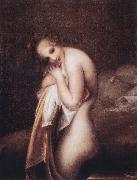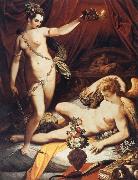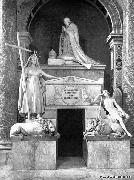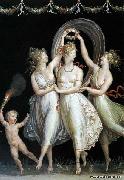
|
Artists
Index
|
||
|
Antonio Canova
|
||
|
Entspannung durch unsere Galerie new9/Antonio Canova-274887.jpg Gemälde IDENTIFIZIERUNG:: 32542 |
mk79 1789-1790 | |
| |
|
|
|
|
||
|
Entspannung durch unsere Galerie new9/Antonio Canova-633238.jpg Gemälde IDENTIFIZIERUNG:: 32614 |
mk79 1798 | |
| |
|
|
|
|
||
|
Marmor new12/Antonio Canova-832629.jpg Gemälde IDENTIFIZIERUNG:: 38548 |
mk138 160x65x85cm In der Koniglichen Antikensamm-Lunge seit 1830 übertragen auf den Nationalgalerie in 1878 | |
| |
|
|
|
|
||
|
Tomb of Pope Clement XIII new21/Antonio Canova-393836.jpg Gemälde IDENTIFIZIERUNG:: 62405 |
1792 Marble Basilica di San Pietro, Vatican Here, too, Berninian references are not lacking, as in the figure of the pope, but the overall setting places the whole amongst the finest works of Neoclassical in general, not just in Rome. The asymmetrical figures of Religion and Genius generate a circular movement that pervades the entire composition. Author: CANOVA, Antonio Title: Tomb of Pope Clement XIII Form: sculpture , 1751-1800 , Italian , religious | |
| |
|
|
|
|
||
|
The Three Graces Dancing new21/Antonio Canova-667228.jpg Gemälde IDENTIFIZIERUNG:: 62546 |
1799 Tempera on paper Canova Museum, Possagna Canova mentioned "various ideas on dances, the play between nymphs and cupids, muses, philosophers, etc., sketched exclusively for the artist's own study and enjoyment." There is little doubt he was referring to the tempera cycle at Possagno and similar sketches now in Bassano. Picking up the themes and techniques discovered in Herculaneum, Canova created brightly coloured mythological figures that stand out against the black background. These sketches are the forerunners of themes and figures he would later sculpt. The picture shows a detail from a frieze. Author: CANOVA, Antonio Title: The Three Graces Dancing Form: graphics , 1751-1800 , Italian , mythological | |
| |
|
|
|
|
||
| Nächster Künstler | ||
|
Also Buy::. For Following Paintings / Artists / Products, Please Use Our Search Online: |










